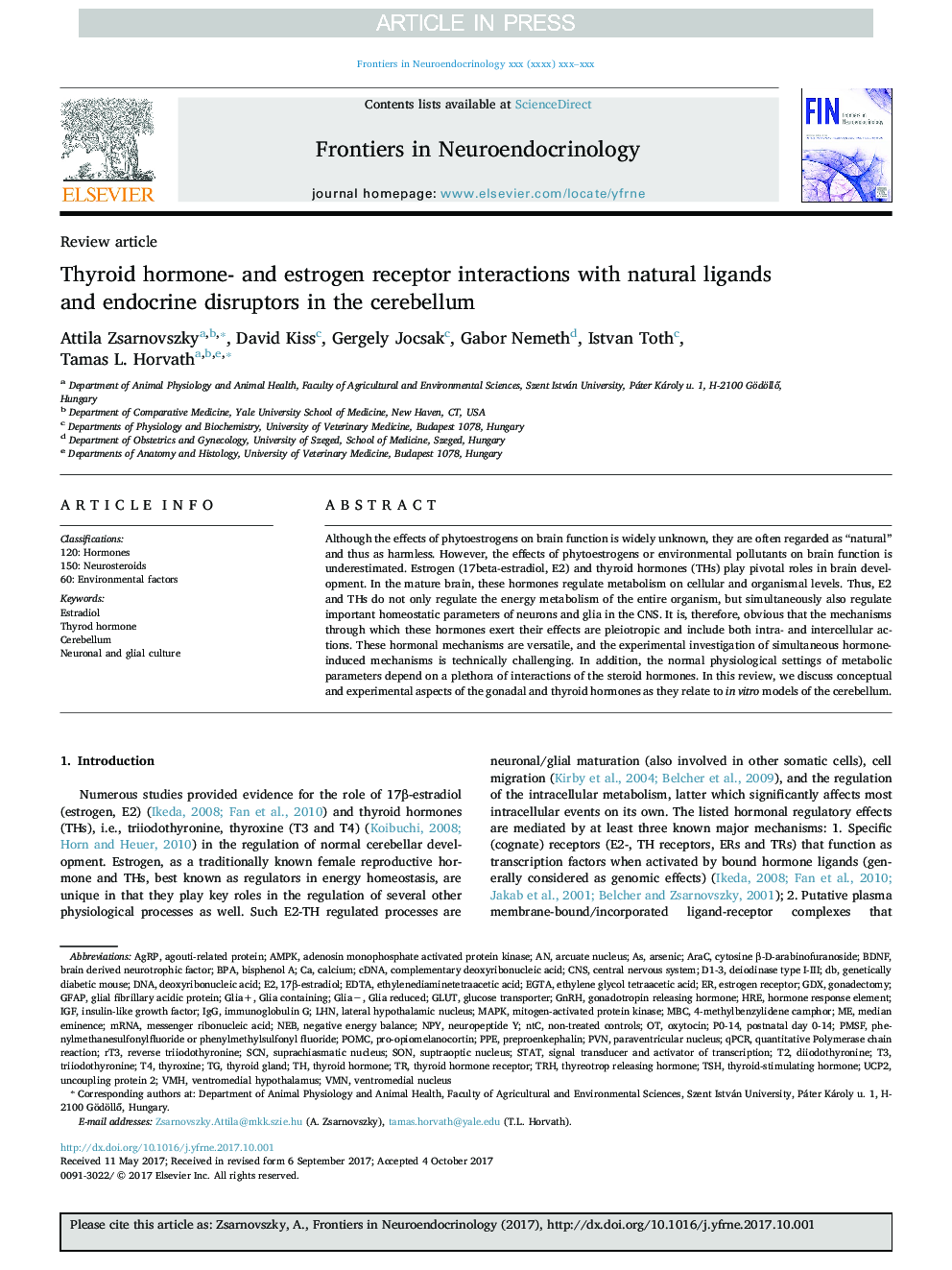| Article ID | Journal | Published Year | Pages | File Type |
|---|---|---|---|---|
| 8630575 | Frontiers in Neuroendocrinology | 2018 | 14 Pages |
Abstract
Although the effects of phytoestrogens on brain function is widely unknown, they are often regarded as “natural” and thus as harmless. However, the effects of phytoestrogens or environmental pollutants on brain function is underestimated. Estrogen (17beta-estradiol, E2) and thyroid hormones (THs) play pivotal roles in brain development. In the mature brain, these hormones regulate metabolism on cellular and organismal levels. Thus, E2 and THs do not only regulate the energy metabolism of the entire organism, but simultaneously also regulate important homeostatic parameters of neurons and glia in the CNS. It is, therefore, obvious that the mechanisms through which these hormones exert their effects are pleiotropic and include both intra- and intercellular actions. These hormonal mechanisms are versatile, and the experimental investigation of simultaneous hormone-induced mechanisms is technically challenging. In addition, the normal physiological settings of metabolic parameters depend on a plethora of interactions of the steroid hormones. In this review, we discuss conceptual and experimental aspects of the gonadal and thyroid hormones as they relate to in vitro models of the cerebellum.
Keywords
GLUTMBCNPYAgRPPOMCTSHPMSFSCNVMNpro-opiomelanocortincytosine β-d-arabinofuranosideUCP2BPAVMHHREGDxPPENEBLHNrT3GnRHreverse TriiodothyroninediiodothyroninemRNAGFAPNTCIgGEGTAAMPKqPCRIGF17β-estradiol4-Methylbenzylidene camphorBDNFcDNADNAMAPKArsenicSTATEDTAethylene glycol tetraacetic acidEthylenediaminetetraacetic acidEstradioldeoxyribonucleic acidcomplementary deoxyribonucleic acidoxytocinimmunoglobulin GtrhBisphenol ATriiodothyronineNegative energy balancethyroxineAraCGlucose transporterCNSmessenger ribonucleic acidcentral nervous systembrain derived neurotrophic factorHormone response elementThyroid glandInsulin-like growth factorSONPVNSignal transducer and activator of transcriptionCerebellummedian eminenceVentromedial nucleusarcuate nucleuslateral hypothalamic nucleusparaventricular nucleusSuprachiasmatic nucleusgonadotropin releasing hormoneThyroid-stimulating hormoneThyroid hormoneVentromedial hypothalamusquantitative polymerase chain reactionGlial fibrillary acidic proteinuncoupling protein 2Agouti-related proteinmitogen-activated protein kinasePreproenkephalinCalciumGonadectomyEstrogen receptorthyroid hormone receptorNeuropeptide Y
Related Topics
Life Sciences
Biochemistry, Genetics and Molecular Biology
Endocrinology
Authors
Attila Zsarnovszky, David Kiss, Gergely Jocsak, Gabor Nemeth, Istvan Toth, Tamas L. Horvath,
